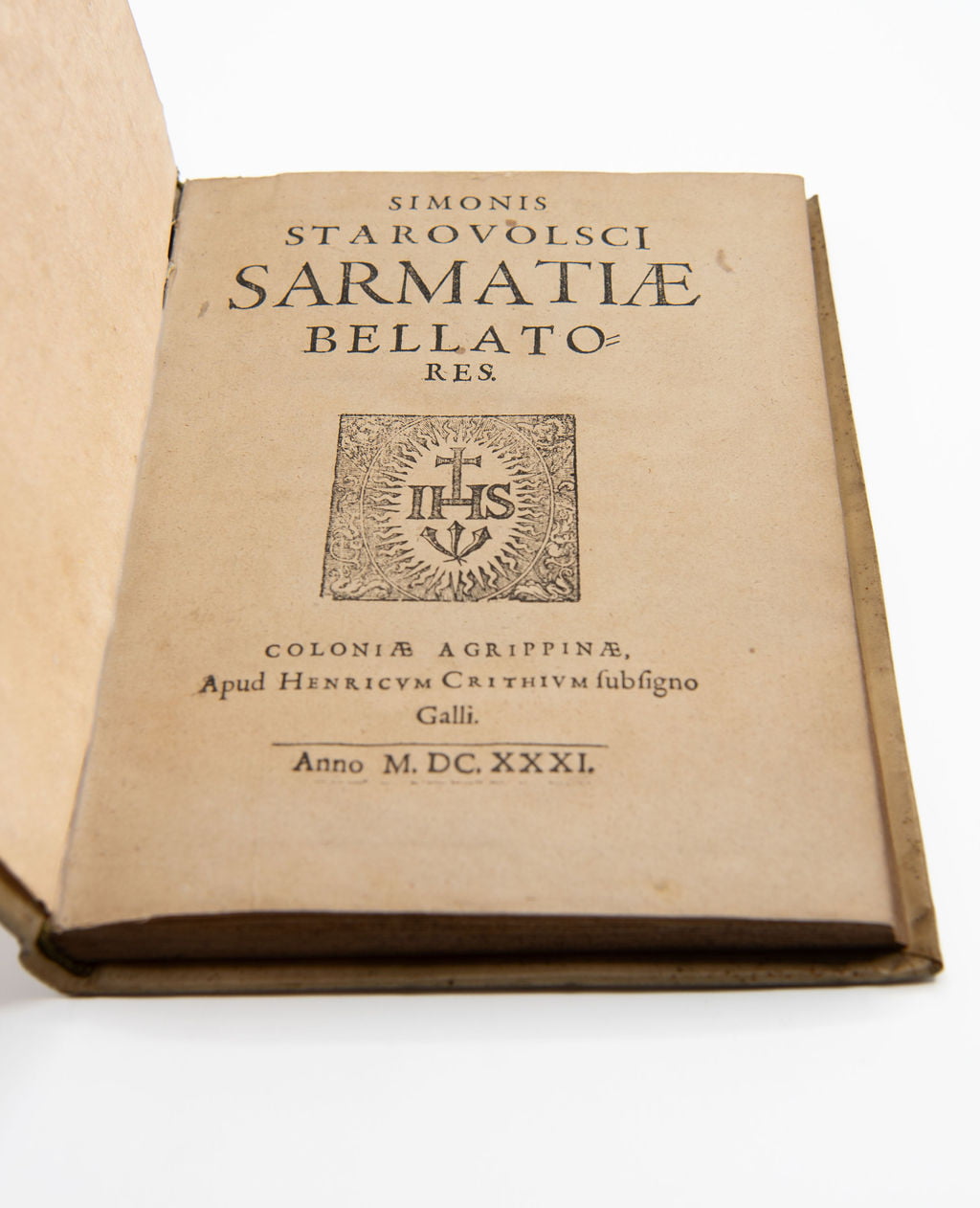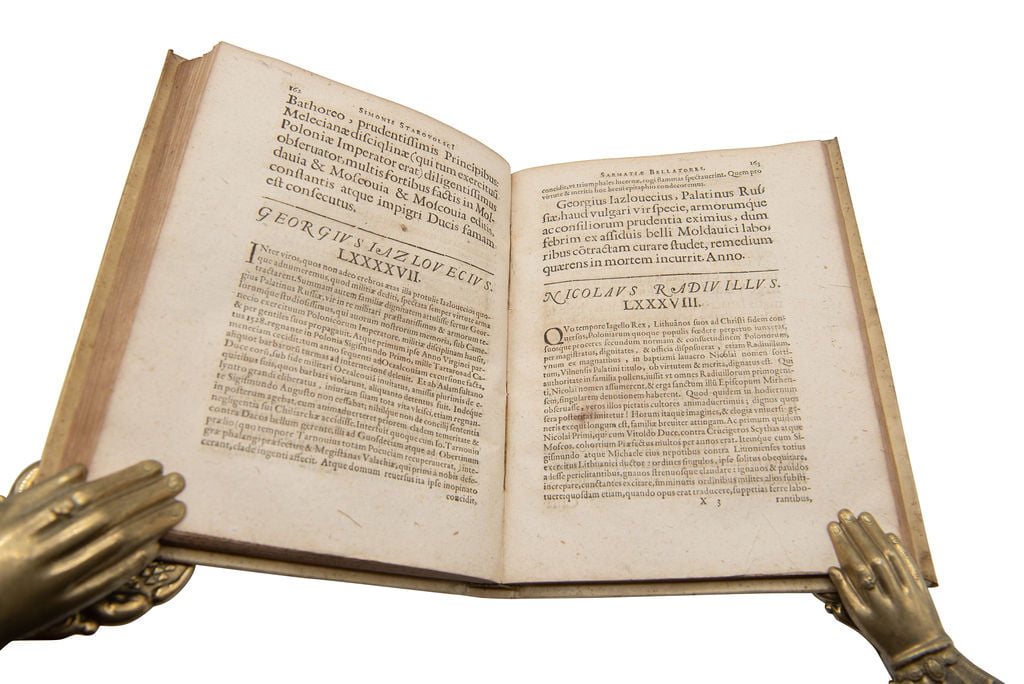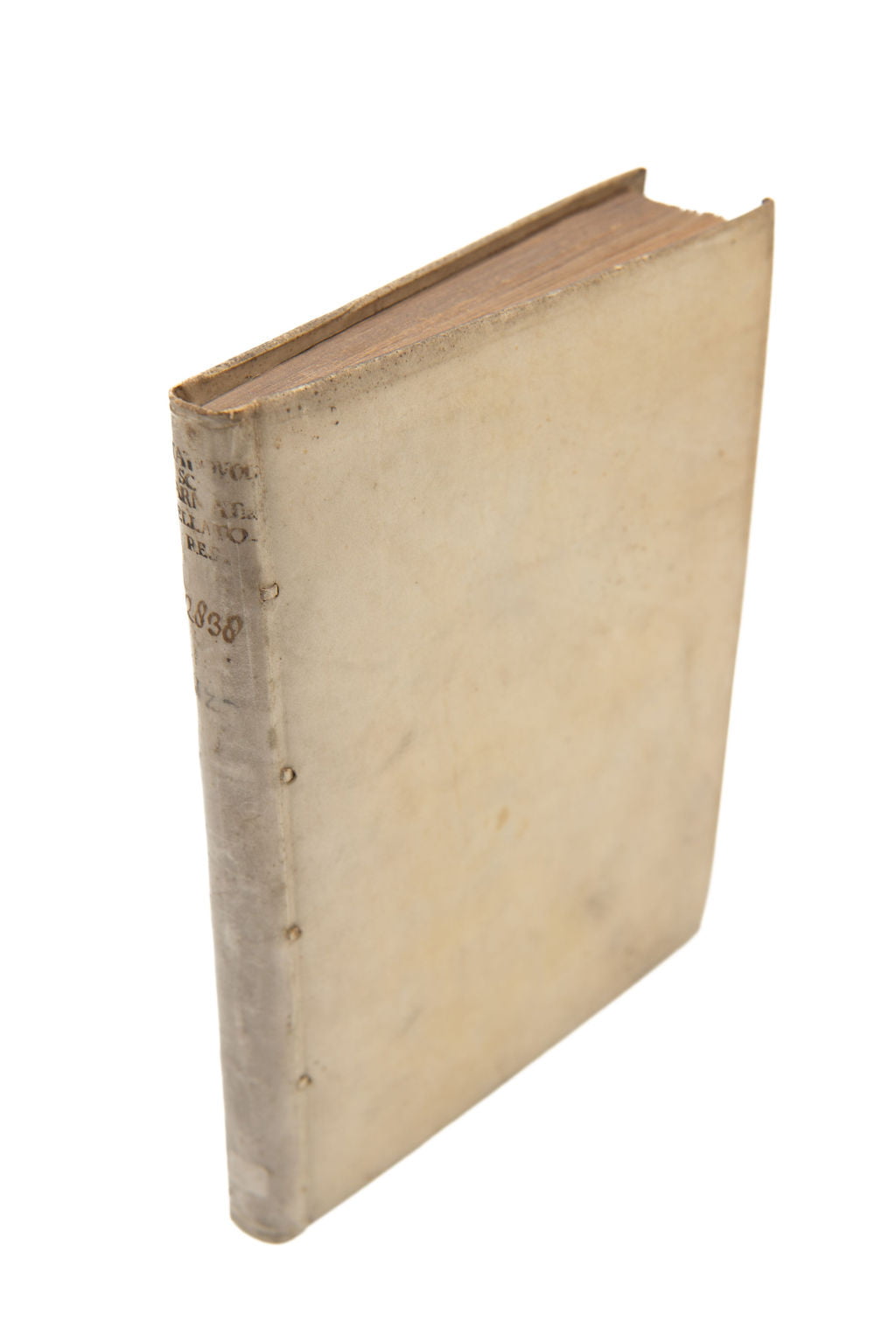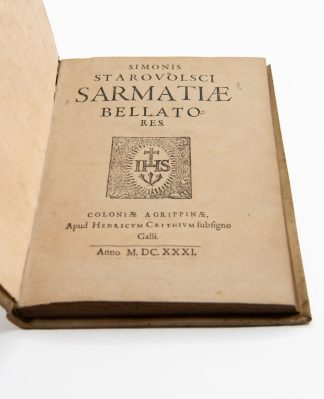STAROWOLSKI, Szymon.
ONE COPY RECORDED IN USA
Sarmatiae Bellatores
Köln, Heinrich Crith, 1631£4,250.00
FIRST EDITION. 4to, (viii) 243 [i.e. 145] (iii). Roman and italic letter, Christogram of the Jesuits to t-p. Light age browning, a few deckle edges, very rare and mostly marginal spots, spillage to p. 113 mildly affecting 5 words. A very good copy in contemporary vellum over boards, C19 Nordkirchen bookplate of the Dukes of Arenberg to front pastedown.
A very good copy of the first edition of Starowolski’s most acclaimed ‘Sarmatian Warriors’, containing 130 biographies of Polish knights, rulers and magnates.
Szymon Starowolski (1588 – 1656; Simon Starovolscius) was a scholar, historian and priest in the Polish-Lithuanian Commonwealth. After completing his studies at the Kraków Academy, he became secretary to the famous military commander Hetman Jan Karol Chodkiewicz, and later worked as a preceptor to many young nobles. He travelled to Germany, the Netherlands, Spain, Italy and France. Exceptionally prolific, he wrote about 70 works in Latin and Polish on many different subjects, including law, politics, theology, the military arts, philosophy, customs, literature and history.
‘Sarmatiae Bellatores’ is one of Starowolski’s most famous works, comprising biographical accounts of Polish warriors from the Mieszko I (c. 922/45-992) to Stefan Chmielecki (1580-1630). Intended for a foreign public, its purpose was to counter international views that questioned the military prowess of the Poles. “The mythical common descent of all nations of the Polish-Lithuanian Commonwealth from the ancient Sarmatian warrior-heroes, who successfully resisted Roman attempts to conquer them, was fashioned into a statement of the Commonwealth’s constitutional and political superiority over West European societies oppressed by absolute royal power. Szymon Starowolski founded his reputation as a patriotic historian early on by collecting a pantheon of Sarmatian heroes, of bellatores et scriptores, who included representatives of all nations of the Commonwealth […] References to great historical rulers and nations pointed at the imitation of past virtue” (Friedrick). “Medieval heroes in Starowolski’s Sarmatiae Bellatores of 1631 fight, plunder, demolish, and destroy with fire and sword (the favourite phrase of this historian), and only rarely do they build something in their domains.” (Barbara Arciszewska) Starowolski’s work is “an interesting attempt to represent the Ruthenian [i.e. East Slavic] and Lithuanian nobility as part of the Polish-Sarmatian noble nation, as well as to include Ukranian Cossackdom in that national model.” (Plokhy)
The Nordkirchen bookplate combines the blazons of Mária von Plettenberg-Wittem (1809-1861) and of her husband Miklós Ferenc Esterházy de Galántha (1804-1885), to whom she brought the Nordkirchen castle as part of her dowry. In 1903, the castle and its library passed to Herzog Engelbert-Maria von Arenberg (1872-1949). His son Engelbert-Karl (1899-1974), the 10th duke of Arenberg, began selling off the ducal library in 1951.
USTC 2073819; VD17 23: 230454F; BM STC Ger. 17 century, S2670. Not in Brunet or Graesse. S. Plokhy, The Cossacks and Religion in Early Modern Ukraine (2001). K. Friedrick, History, Myth and Historical Identity, in: Collins and Taylor (eds), Early Modern Europe (2008). B. Arciszewska, Early Modern Conceptualizations of Medieval History, Intersections 60 (2018). Worldcat records only one copy in the US (Yale).In stock





